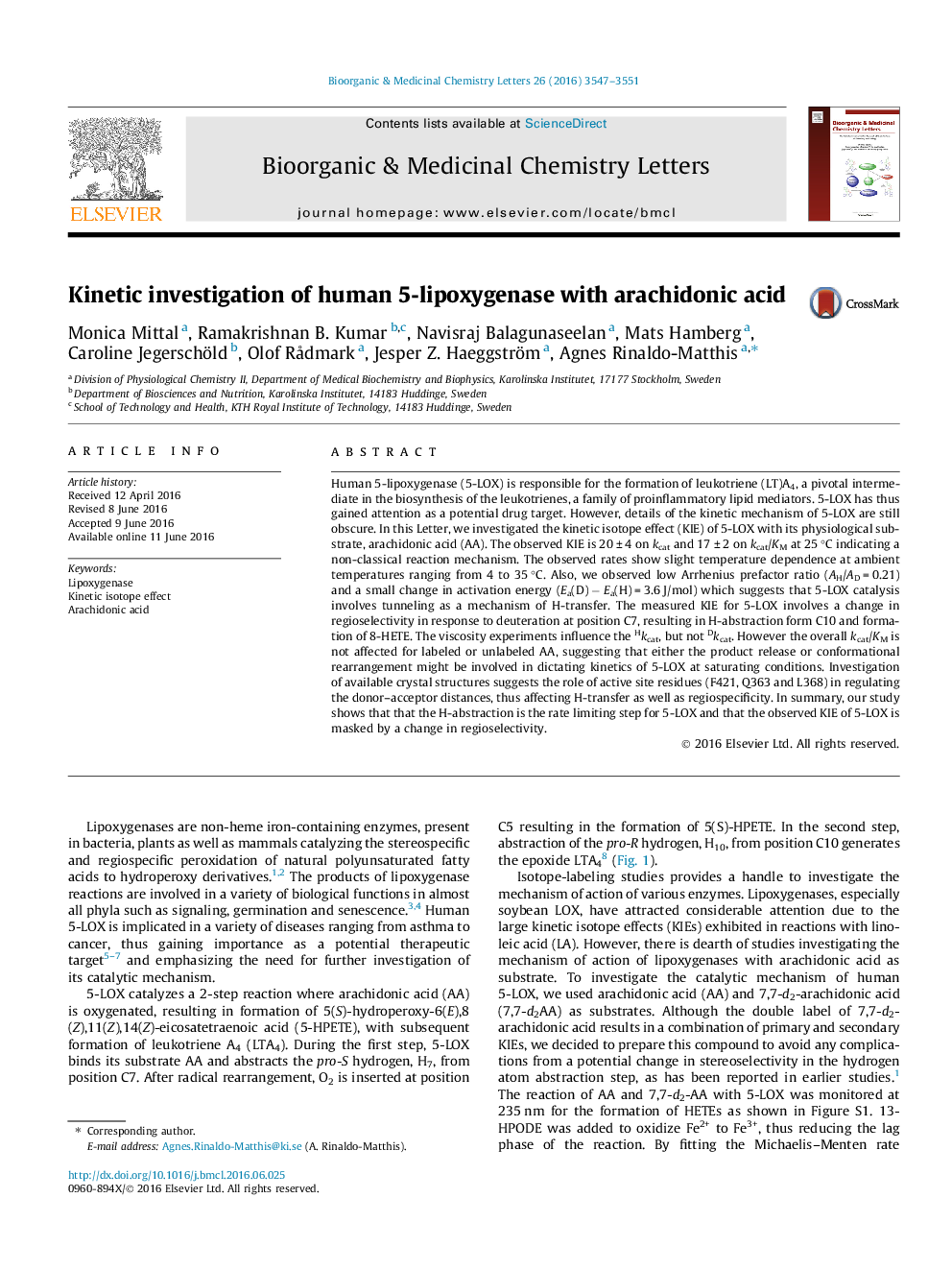| کد مقاله | کد نشریه | سال انتشار | مقاله انگلیسی | نسخه تمام متن |
|---|---|---|---|---|
| 1368511 | 981701 | 2016 | 5 صفحه PDF | دانلود رایگان |
• Kinetic isotope effect for human 5-lipoxygenase is reported.
• Hydrogen abstraction is the rate-liming step for human 5-lipoxygenase.
• Change in regioselectivity is observed upon deuteration at C-7 of arachidonic acid.
• The viscosity experiments influence the Hkcat more than Dkcat and not the overall kcat/KM for AA and 7,7-d2-AA respectively.
• Enzyme–substrate dynamics is proposed to affect the catalysis.
Human 5-lipoxygenase (5-LOX) is responsible for the formation of leukotriene (LT)A4, a pivotal intermediate in the biosynthesis of the leukotrienes, a family of proinflammatory lipid mediators. 5-LOX has thus gained attention as a potential drug target. However, details of the kinetic mechanism of 5-LOX are still obscure. In this Letter, we investigated the kinetic isotope effect (KIE) of 5-LOX with its physiological substrate, arachidonic acid (AA). The observed KIE is 20 ± 4 on kcat and 17 ± 2 on kcat/KM at 25 °C indicating a non-classical reaction mechanism. The observed rates show slight temperature dependence at ambient temperatures ranging from 4 to 35 °C. Also, we observed low Arrhenius prefactor ratio (AH/AD = 0.21) and a small change in activation energy (Ea(D) − Ea(H) = 3.6 J/mol) which suggests that 5-LOX catalysis involves tunneling as a mechanism of H-transfer. The measured KIE for 5-LOX involves a change in regioselectivity in response to deuteration at position C7, resulting in H-abstraction form C10 and formation of 8-HETE. The viscosity experiments influence the Hkcat, but not Dkcat. However the overall kcat/KM is not affected for labeled or unlabeled AA, suggesting that either the product release or conformational rearrangement might be involved in dictating kinetics of 5-LOX at saturating conditions. Investigation of available crystal structures suggests the role of active site residues (F421, Q363 and L368) in regulating the donor–acceptor distances, thus affecting H-transfer as well as regiospecificity. In summary, our study shows that that the H-abstraction is the rate limiting step for 5-LOX and that the observed KIE of 5-LOX is masked by a change in regioselectivity.
Figure optionsDownload as PowerPoint slide
Journal: Bioorganic & Medicinal Chemistry Letters - Volume 26, Issue 15, 1 August 2016, Pages 3547–3551
